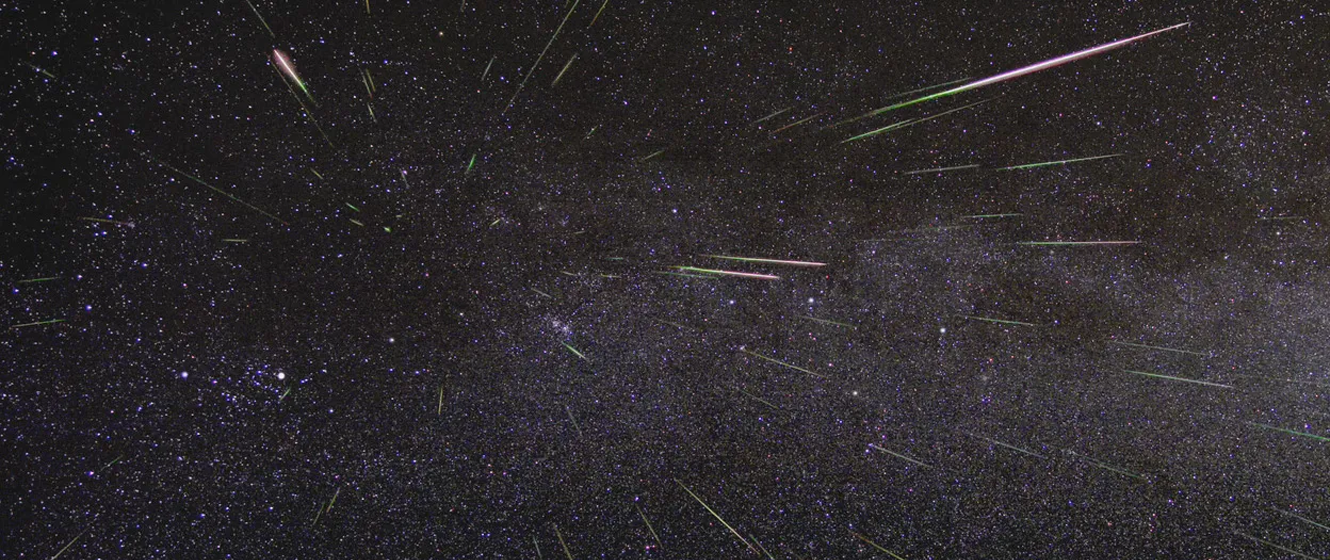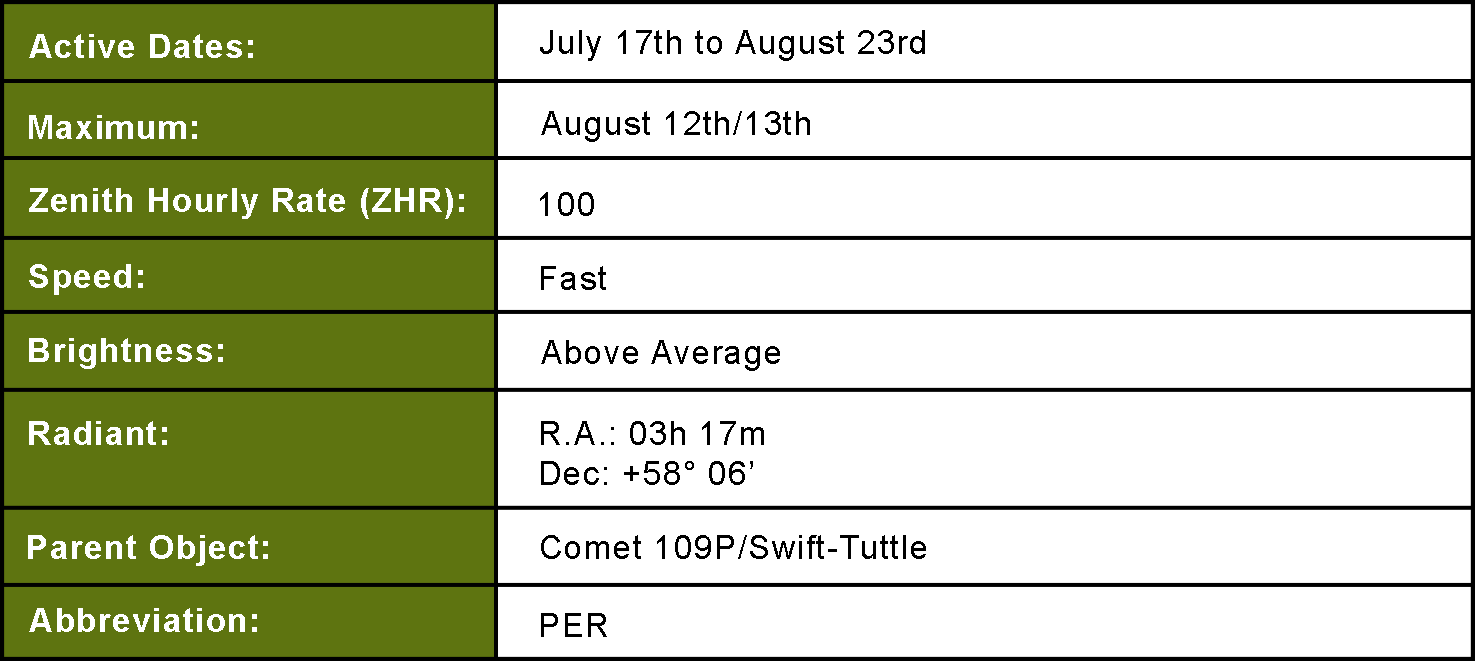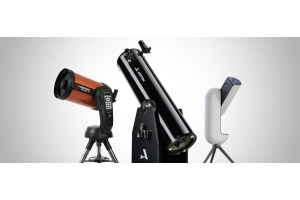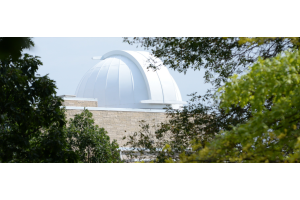
Perseid Meteor Shower: A Summary
What Is the Perseid Meteor Shower?
Arguably the most famous meteor shower of them all, the Perseids is a major meteor shower active between July 17th and August 23rd, with its maximum typically occurring on the night of August 12th/13th. At that time, under ideal conditions, observers can reliably expect to see around 100 shooting stars an hour, making the shower one of the most prolific on the astronomical calendar.
As a result, the Perseid meteor shower has become a very popular celestial event and attracts considerable attention every year. Both the mainstream media and the astronomical community extensively publicize the shower, with this publicity aiming to both promote the event and increase public awareness of the hobby in general.
What Makes the Perseids So Special?
Not all meteor showers are the same. Some, like the Lyrids are bright, while others, such as the Southern delta Aquariids, are relatively faint. The Leonids are fast, but the Ursids move comparatively slowly. Both the Taurid showers are known to produce fireballs, while the Leonids produce storms, with thousands of meteors an hour - but only once every 33 years.
While the Perseids are not famous for being exceptionally bright, or for producing high numbers of fireballs, they have a reputation for reliably putting on a good show that almost anyone, anywhere can enjoy. This is why, for some, the shower has gained the nickname of “Old Faithful,” and just like the famous Yellowstone geyser, you know you won’t be disappointed.
A Brief History of the Perseid Meteor Shower
Another reason why the Perseids are so popular is because they’ve been observed for literally thousands of years, resulting in the shower’s popularity spreading across the world. The ancient Greeks were undoubtedly aware of the shower, but it was the Chinese who made the first recorded observations in 36 AD. The Romans associated the shower with fertility, while the Catholics later saw the shooting stars as the tears of Saint Lawrence, the martyr who died on August 10th, 258 AD.
The Perseid meteor shower was also the first of its kind to be identified as occurring on a regular, annular basis. In 1836, the Belgian-French astronomer Adolphe Quetelet noted a higher frequency of shooting stars between August 8th and 15th, and predicted that a higher than average number of meteors would occur on the night of August 10th.
You can also thank the Perseids for the established connection between shooting stars and comets. In 1861, the American astronomer Daniel Kirkwood theorized that meteors were the debris of disintegrated comets, but it was Giovanni Schiaparelli, the Italian astronomer who would later infamously publicize the non-existent canals on Mars, who would definitively prove it.
In 1862, Comet 109P/Swift-Tuttle was discovered by the American astronomers Lewis Swift and Horace Tuttle. Following the discovery, Schiaparelli noticed that the comet’s orbit intersected with the Earth’s, and that the Earth passed the point of intersection in August. He therefore deduced that the meteor shower was, in fact, caused by the trail of dust left by the comet as it orbited the Sun.
Lastly, while shooting stars are frequently no larger than an apple seed, that doesn’t mean they can’t potentially cause a lot of damage. In August 1993, a Perseid meteor was suspected of hitting the Russian space station Mir, causing three subsequent spacewalks to inspect the station for damage. Fortunately, none was found.
How Can I Observe the Perseid Meteor Shower?
Like many of the major meteor showers, the Perseids are named for the constellation from which they appear, and in this case, the constellation in question is Perseus. Located in the northern celestial hemisphere, the shower is therefore best observed north of the equator on Earth.
An autumnal constellation, it rises at around midnight towards the northeast during the summer months, giving observers a few hours of darkness to delve into some deep sky observing before the main event begins. (Unless, of course, you find yourself hampered by the Moon!)
The Perseids have their radiant - the point from which the meteors appear to originate - three and three quarter degrees east of Miram (Eta Persei) and four and a half degrees northeast of Al Fakhbir (Gamma Persei), the two northernmost stars of Perseus. Neither of these stars is particularly bright, but if you look roughly midway between Mirfak (Alpha Persei) and Segin (Epsilon Cassipeiae, at the tip of the constellation nearest to Perseus) then you’ll be looking in approximately the right direction.
The radiant itself doesn’t clear the turbulent air close to the horizon until around 1:00AM, and with it being August, the Sun still rises relatively early. For observers in the US, the sky brightens at around 4:45AM, with sunrise occurring at around 6:30AM. Unfortunately, the Perseids don’t reach their culmination until around 7:00AM, making this a shower best observed at least several hours before dawn.
A 10 Year Forecast
The table below shows the Moon phase and planets that may be visible above the horizon at 3:00AM on August 13th of each year. It should be noted that (again, as with all meteor showers) the date of the maximum can vary a little from year to year, and the exact timing isn’t typically known until the International Meteor Organization releases its annual report.
With that in mind, although the Perseids are typically at their best on the evening of the 12th and in the early hours of the 13th, they can occasionally peak on the evening of the 11th and in the early hours of the 12th.
In terms of the rating, if the Moon is below the horizon at that time then its light won’t drown out the fainter meteors, and the rating is five stars. However, if the Moon is above the horizon, then the rating is based upon the phase, altitude and distance of the Moon from the radiant at that time.
Lastly, if the Moon is in the western hemisphere and more than half full, it might be best to wait for the Moon to set before stepping outside. If the Moon is waning and half full or a little less, then it’s best not to wait to observe the shower, as the Moon will only rise higher as the night progresses, potentially causing more interference as its altitude increases.

Learn More
Interested in diving deeper into the world of astronomy? Check out our AstronomyHub for a wealth of articles, guides, local resources for planetariums and observatories near you, and more to enhance your stargazing experience.












